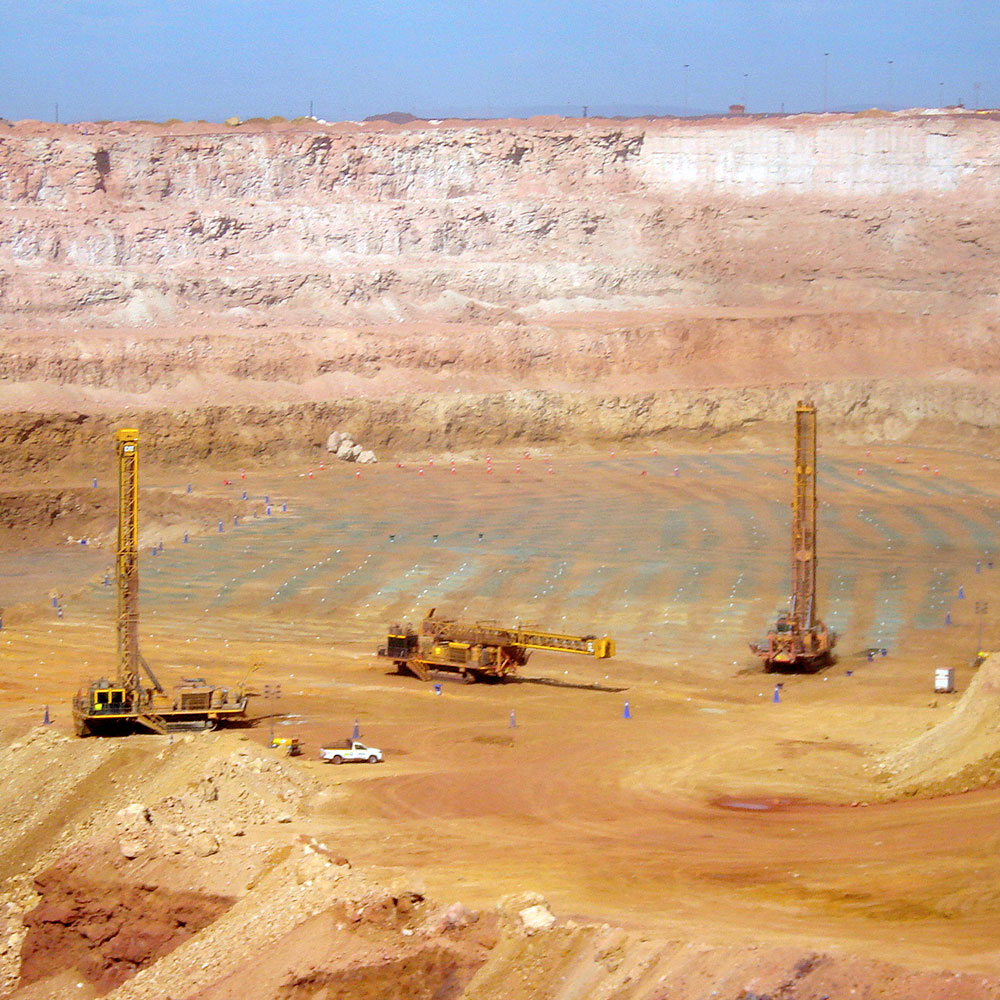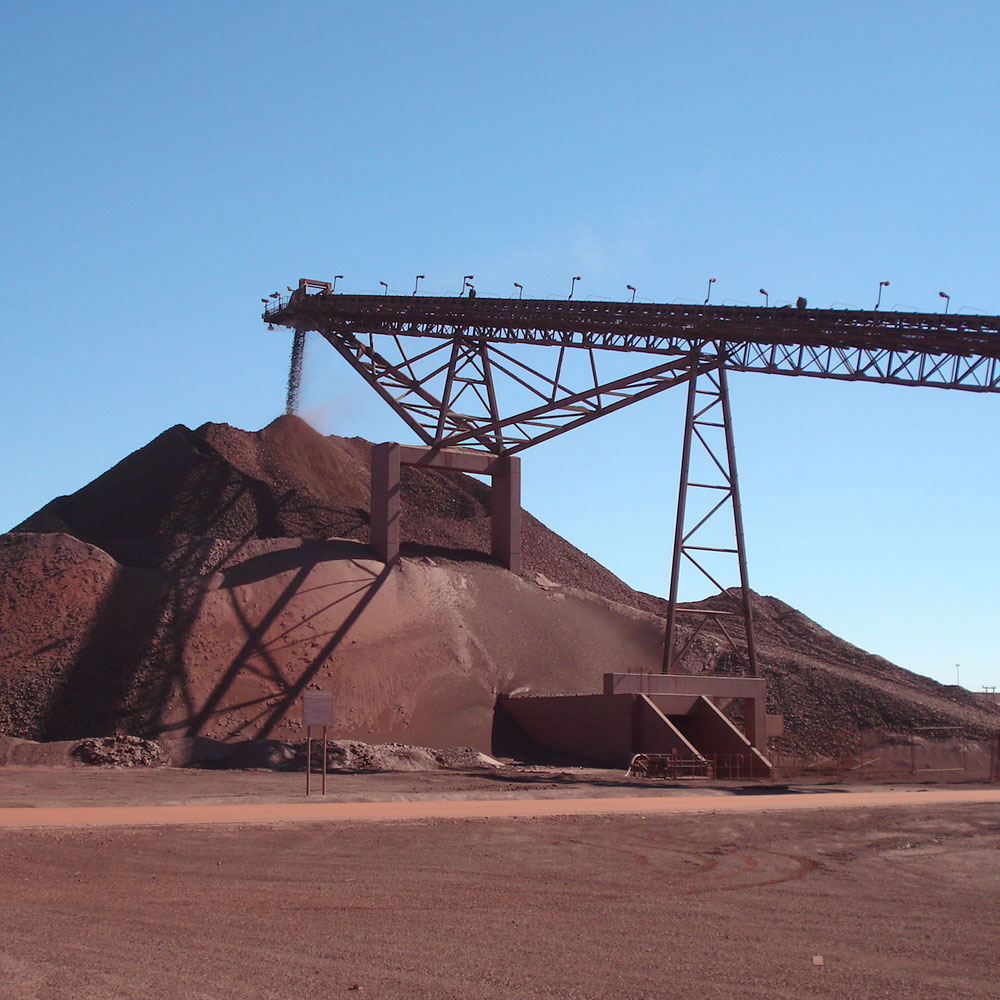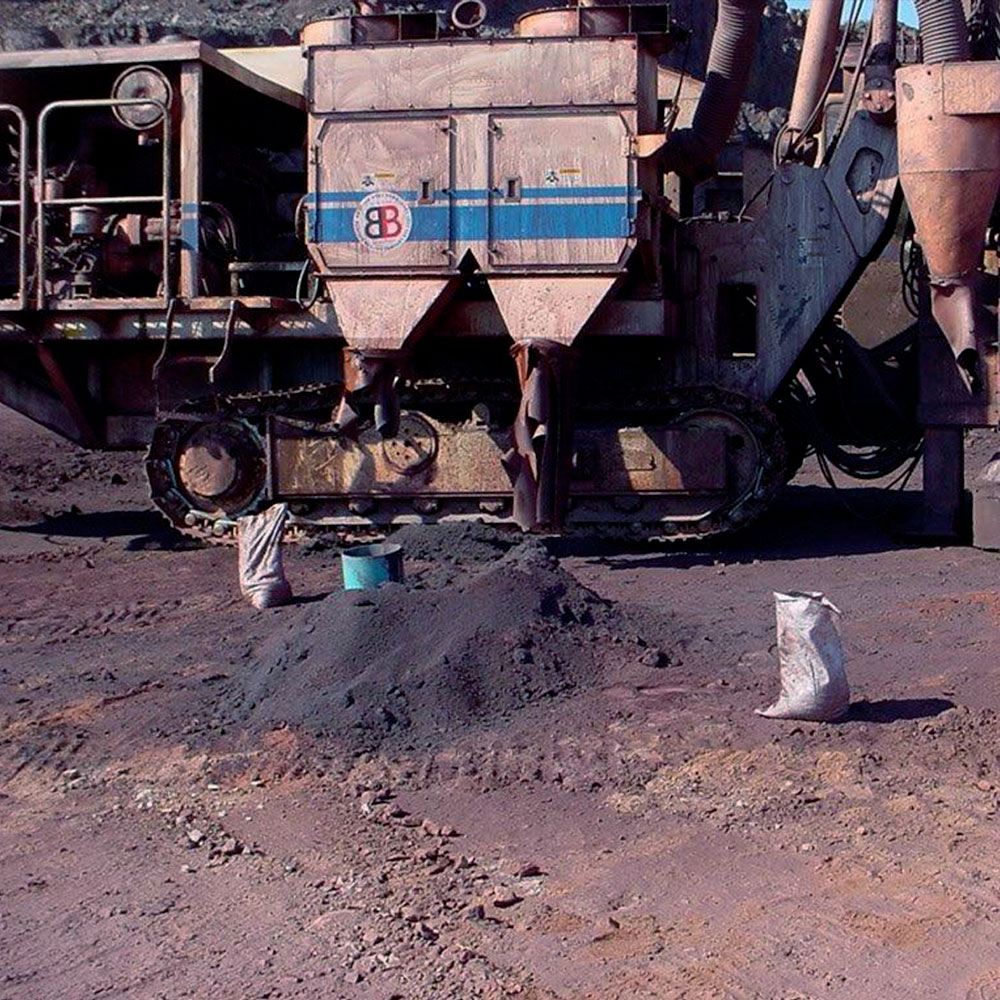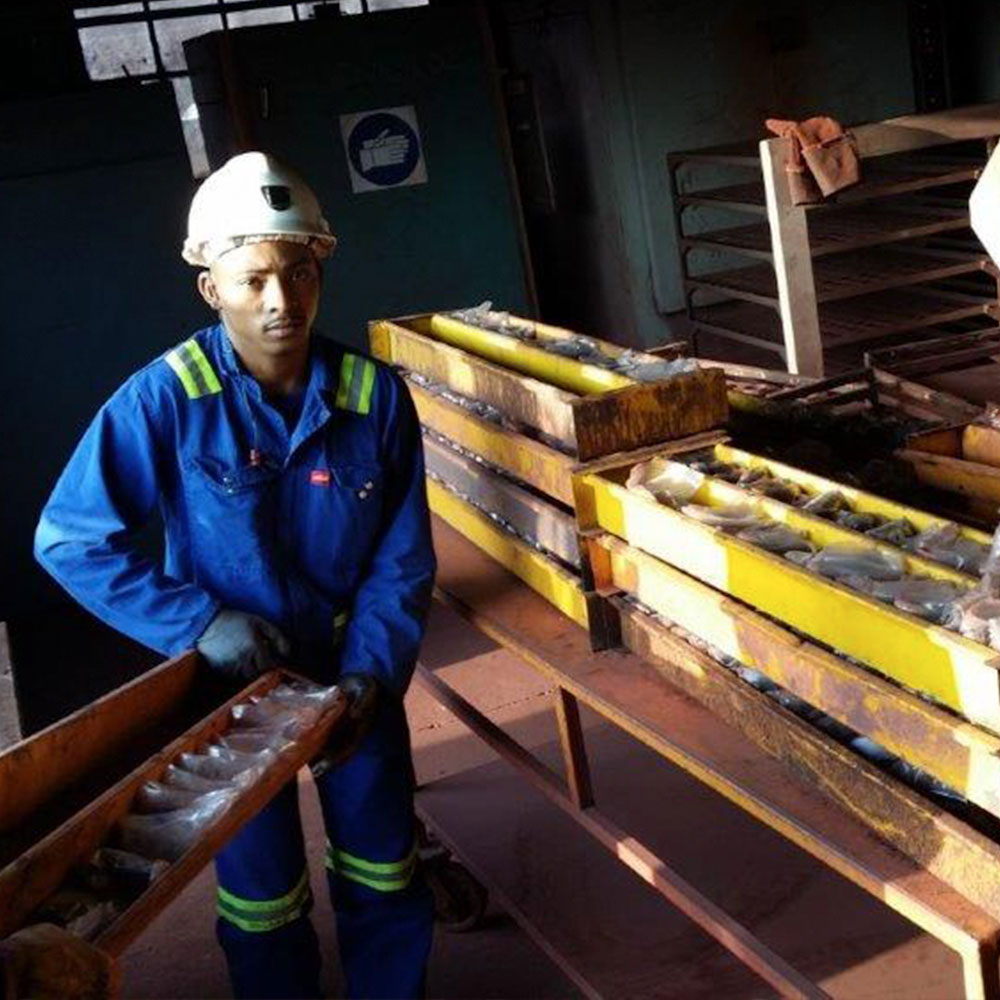Validated results
An RFID enabled Grade Control Management System (GCMS®) was developed and implemented at an iron ore mine in South Africa.
Based on the Mine Trial results, it became clear that the RFID enabled GCMS® can track samples, measure blast movement, and track ore from Pit to Plant. This provided a substantial reduction in ore losses with an estimated improvement in annual revenue of US$200 million at two iron ore mines combined without taking into consideration the financial benefits that can be derived from the improved operational efficiencies.
The mine trial results suggests that the deployment of the GCMS® system to enable the primary applications described above would generate benefits more than sufficient to offset the cost of the deployment and that it would significantly enhance operational efficiencies, and reduce ore losses.
1. Blast block moving measurement
Four blast blocks underwent Blast Movement Monitoring. Of the four blocks, three had ore/waste contacts, and one was entirely ore. The results indicated:
- Blast 1 – This blast contained a single ore/waste contact which moved perpendicular to the strike. Over 5,000 tonnes of dilution were induced by this movement, which cost the mine approximately US$250,000.
- Blast 2 – Due in part to the absence of waste in this blast, blast monitoring movement tags were placed at various locations throughout the blast to obtain vertical profile information. All ore was recovered due to the absence of waste.
- Blast 3 – The waste in the northwest half of the blast moved into the ore zone, which resulted in approximately 10,700 tonnes of waste being processed as ore. The estimated cost of this dilution is over US$534,000.
- Blast 4 – This blast contained a single ore/waste contact. The blast was primarily ore, and this material moved into a waste zone, which results in ore being sent to the waste dump, or ore loss. The value of this lost ore was over US$565,000.
In summary, $1,35m (ZAR24m) worth of lost ore could have been recovered by using Blast Movement Monitoring in three blasts events. The reason is that ore movement are often perpendicular to the blast striking direction. Mines that measure blast movement, will therefore be able to recover ore at a higher accuracy rate.
2. Iron Ore tracking
The test evaluated the ability to tag an ore body within the block pre blast and track the ore throughout the mining process from pit to plant and any further strategic location within the ore transfer process. The results provided the following benefits:
- Residence Times – The ability to measure residence time between any two points. For example A2 material from one block took 38 days from the time it was blasted until it was discharged from the Buffer Stockpile.
- Stockpile Management – The GCMS® Ore Track system allows for Stockpile Management, which shows the latest grade that has been placed on the stockpile together with a date and time stamp.
- Ore blending – since you can determine what quality ore is in a particular stockpile, you can map it accurately. This enables accurate ore blending.
- Retention Times – The retention time of a particular ore body, flowing through the Buffer Stockpile can be monitored.
- Ore to waste savings – the results indicated that on average 13% of ore is incorrectly dumped at the waste site. At least 75% of this 13% loss can be prevented using the GCMS technology, and adding almost 10% to ore processed.
The ore tracking trial resulted in a projected revenue benefit of US$172m at a Return of Investment of 3 378%. Similarly, this resulted in a net benefit of US$79m per annum at a Return of Investment of 4 439%.
3. Sample tracking
Because of the frequency of incidents of losing samples, unidentifiable samples as well as the time lost during manually tracking and tracing of samples, the capacity of the Geology function is unable to keep up with that of the Mining function, resulting in periods of “ Blind Mining.”
The RFID Sample Tracking System involves the installation of a RFID label printer, a RFID Reader Portal at sample prep receiving, and a visual display unit, all networked to the GCMS® System. A portable handheld device provides for manual sample search and auditing. The RFID enabled Sample Tracking System does not affect the current sample preparation process, but simply integrates automatic sample tracking and inventory control with real time notifications of missing samples.
This makes it possible to measure samples received vs samples planned in real-time. The samples are seamlessly integrated into the mine’s existing laboratory information system. Sample recovery rate increases from 65% to 100% is common.
Test results indicated that, once blasted, a period of anything between two and four days, or 15% to 25% of mining time, can elapse during which the dispatchers and shovel operators are effectively mining blind. During this time there is little or no certainty as to what grade of ore, if not waste, is being sent to the primary crusher and stockpile.
The result of this problem is most significant in two respects:
- Ore dilution, and
- Ore losses.
The placement of RFID tags in sample bags including source location and instructions facilitates the following benefits:
- Reduced block classification time arising from;
- Faster data capture,
- More accurate data capture, and
- Faster sample turnaround
This would help to ensure that the capacity of Geology matched the capacity of mining and that sample data was assigned to block maps prior to the commencement of mining.
4. Sample preparation and analysis
There are several problems experienced with sampling at mines.
- Planned samples get lost between the pit and the lab
- Sample bag labels get wet and unreadable
- Lab workers fail to record all samples into the lab information system
- Lab protocols are not always followed which means inaccurate information is recorded on sample certificates.
Sample Tracking and Management System (STMS) is a RFID enabled solution to manage and track the sampling process of mining sector from block to lab. The STMS system involves the automatic identification, tracking and management of samples received and processed within the sample preparation plant.
The STMS system automatically identifies the worker managing the samples. It measures and records all parameters during the sample preparation process, like:
- The temperature of the oven and duration that the samples are in the oven.
- Protocol compliance during crushing and splitting
Only if full compliance with the protocol is achieved, will the system issue a sample certificate which is then linked to the block of ore that was mined. This block identity then accompanies the ore from the pit to final delivery.




